Brest 0km/0mi ***
We spent today adjusting to “Russia” and recuperating a bit. Some background on Belarus and the city of Brest, then a tour…
Belarus (“White Russia”), located at a crux in Europe, has gone through way to many wars and owners (Russia, France, Germany, Lithuanian, Poland, Austria/Hungary) over the past 1000 years to go into. “Throughout history, Belarusian people have been the underclass in their own country.” Pre-WWII there were “huge” Polish and Jewish populations here, “all of whom were either killed or fled during WWII, or were sent off to Siberia in its aftermath.” Home (to most of the impact of) of Chernobyl, and Europe’s worst performing economy (Bob’s unverified opinion), Belarus’ death rate exceeds it birth rate by more than 50% – its population is declining faster than any other country in Europe.
Belarus split from Russia in 1991 “with no history whatsoever as a politically or economically independent entity”, held their first and only direct (free) election in 1994 where the elected a parliament and Alexander Lukashenka as President. Lukashenka crafted a referendum to change the law so that the President (he) could pick all the members of parliament. This one man still controls the executive, legislative and probably the judicial branch of the government which is “backwards and repressive in almost all ways.” And continuing that quote “yet tourists will be undisturbed by its wicked machinations.”
One might think that Charlie and I need worry only about “rampant” private sector crime and corruption. Yet, Mr. Lukashenka is “antagonistic, even combative in his attitude toward the West.” In 1995 two Americans in an international hot air balloon race drifted into Belarusian airspace, where they were shot down (killed) by the Belarusian military. This is just one of numerous incidents against the press, other governments and private citizens that has left the country “politically, an isolated island in the center of Europe.” Last autumn (2002, a year ago) Lukashenka was denied a visa to go to Prague, and separately to go to enter the EU and the USA. Persona non grata.
As you might expect, economic and other statistics coming out of the country are questionable, but there are 10,000,000 people living here. Most are Belarusians (82%) or Russians (11%). “The only sizable, non-Slavic minority in the country is Roma (formerly known as gypsies)”.
After one day here, just in the city of Brest (formerly Brest-Litovsk) the country’s relative (to anywhere else I’ve been) lack of familiarity with tourists is evident. Everything’s in Russian, there are no local tour guides and all other traditional tourist dollar seeking businesses are virtually (maybe totally) non-existent. Given all this, Charlie and I set off on our own walking tour of Brest (350,000 populatio), heading first to be Brest Fortress War memorial.
On the way we were first distracted by the “Museum of Confiscated Art”.
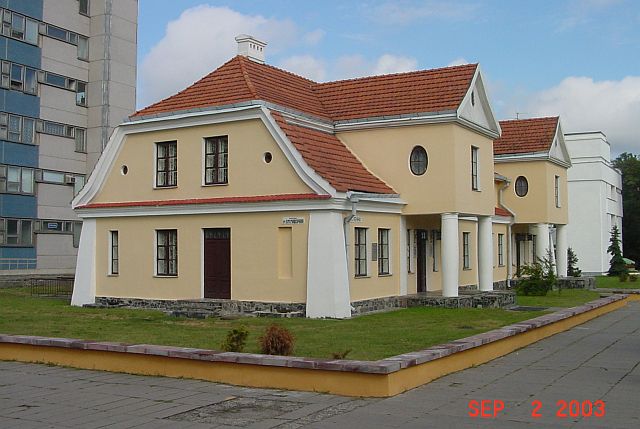
This structure holds art and artifacts that were confiscated from people trying to take them out of Belarus. The two floors are divided into maybe 12 rooms, each with a theme: traditional paintings, metal sculptures, furniture, more contemporary (20th century) paintings, religious artifacts, antique weapons and jewelry… You enter past what looks like a military guard but who may be a policeman (how does one tell? does it make a difference?), pay the cashier and follow the arrows. Ladies in the various rooms turn the lights on as you enter, and then off as soon as you depart. No wasting electricity in this country. Here are two of a dozen photos I took here. That’s a giant bible under all that metal.
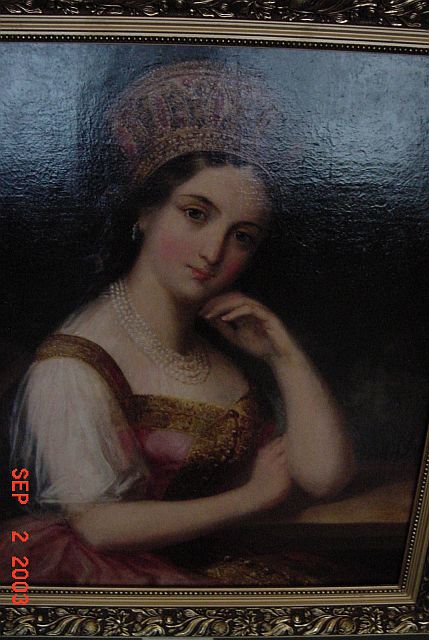
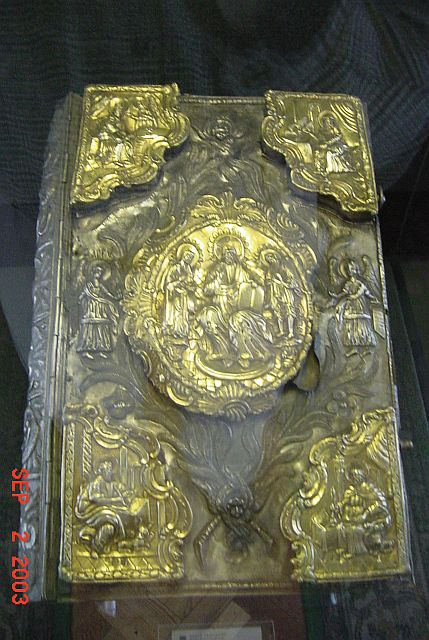
Further on there was a train museum, not mentioned in Lonely Planet. It had dozens of clean, neat historical train engines and cars and would have been worth a visit but the place was closed 🙁 at 10:30am on this Tuesday. I’ll skip the bad picture…
Then it was onto Brest Fortress, the only really significant tourist attraction in Brest and likely the biggest (and best?) WWII monument and museum complex anywhere. I can’t say it better than Lonely Planet: “The scale of the fortress itself is so massive and the heroism of its defenders so vast, even the Soviet additions of a giant stone face and glistening obelisk are dwarfed in comparison.” You enter under a giant, concrete star.
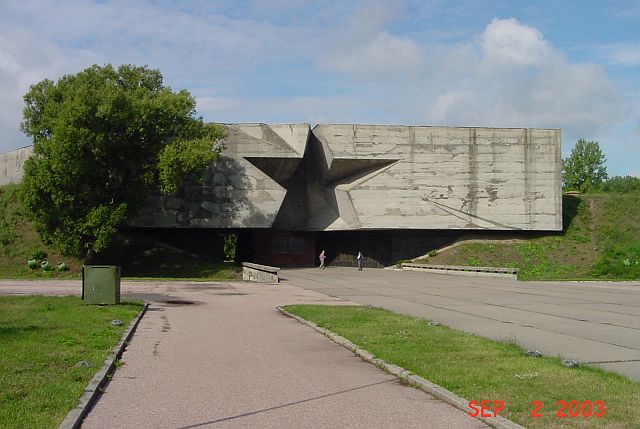
Around 1840 the entire city of Brest was moved east to make way for this fortress which covers a huge area. Angular moats were dug around the perimeter fed by a river flowing through the fortress. Multiple walls and defensive emplacements surround the central fortress which is a ring of barracks seemingly a mile around. Here’s a map:
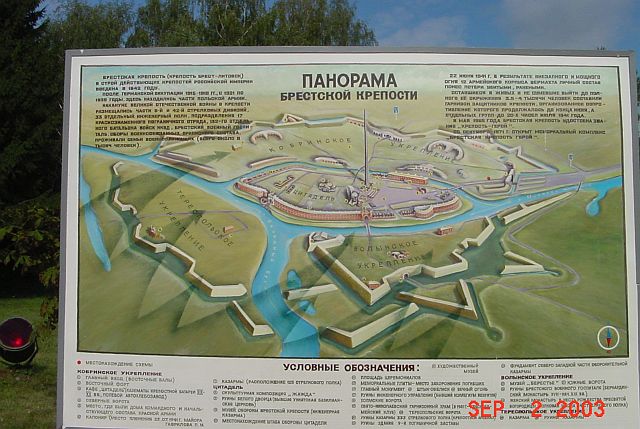
There statues here are emotive – this wounded soldier leans on his sub-machine gun as he reaches for his helmet.
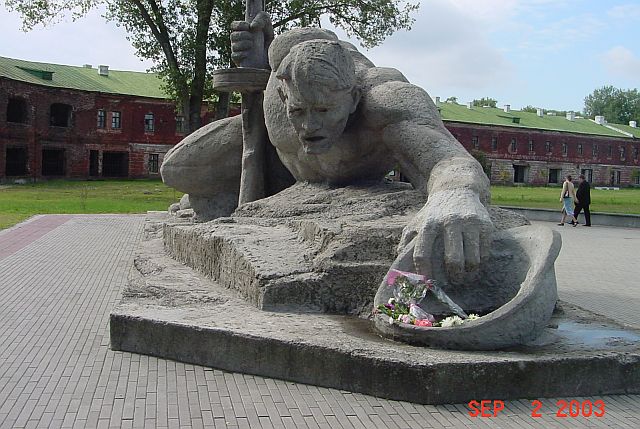
From a distance (the statue above), here is a perspective shot of the bigger than any statue I’ve ever seen (haven’t seen Mt. Rushmore yet) central statue, the obelisk and the church in the center of the barracks courtyard – if you can call it that.

And a closer up of the giant rock statue with Charlie for perspective.
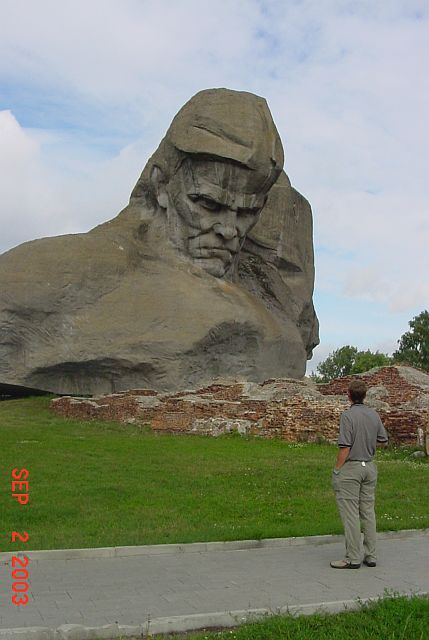
In a couple of places in the fort they have speakers playing emotional speeches, music and war sounds. It does add to the experience. They also have 2 museums on site. One is an archeology museum showing how earlier Slavic people (800 years ago) lived. It’s built around and above a (real) excavated village and contains maybe 20 exhibits of clothing, jewelry, cooking, animals, room settings, the excavation itself, and more.
There’s also the Brest Fortress Museum, which starts with pre WWII history , then goes into the attack and overrunning of the fort (it took a month – some countries didn’t hold out for that long against Hitler’s armies) and ends with the Russian victory over the Germans. Quite well organized, again with dozens of exhibits. Just two photos from this:
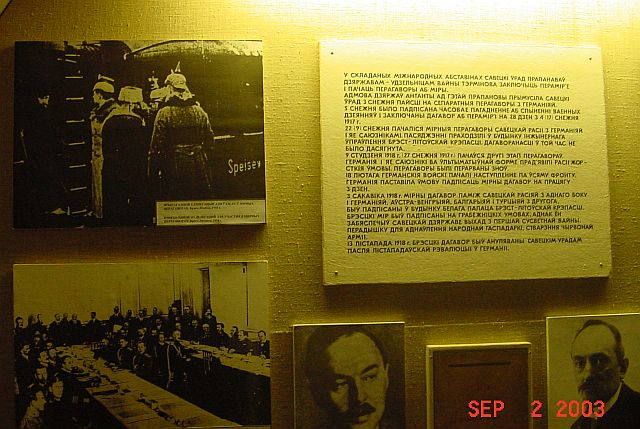
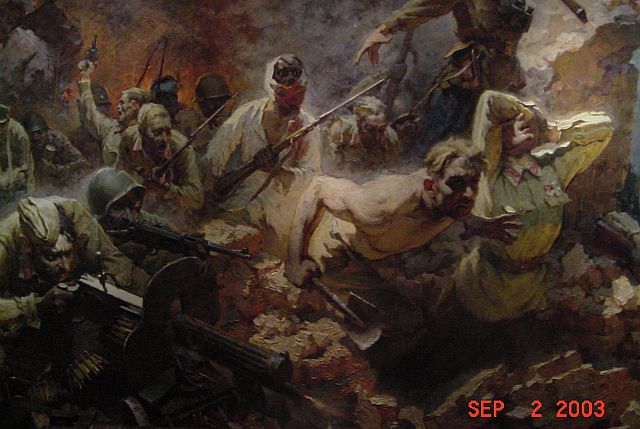
Those were an exhibit on the signing of the Brest- Litovsk treaty and is a painting depicting the heroism of the Russians fighting the Germans. I could have showed you lots of weapons, photographs, uniforms.. but enough of that. We left the Fortress to walk the city – went to Lenin square and saw Lenin:
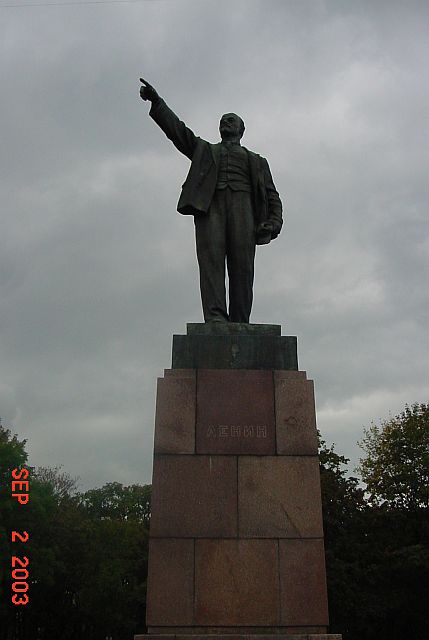
Trotsky, Stalin, Kruschev (sp), Gorbachov, Yeltzen – they may all be part of history, but Lenin is the enduring main statue guy in Russia today. We then went and saw a colorful church with a dark, ornate interior and no pews.
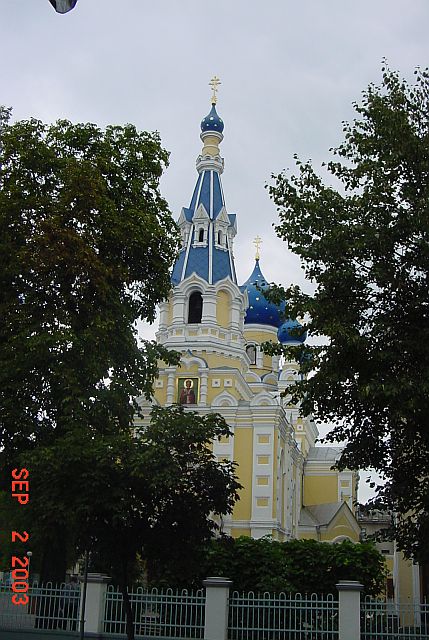
Usually I provide details on such things, but today is overloaded… Then we went to a department store and “surprise to Bob”, they really take the department thing seriously. All the goods are behind counters or in little limited access areas. The better shopping was on the streets of Brest and in the market area. Here’s two street vendors, selling housewares and sticks.
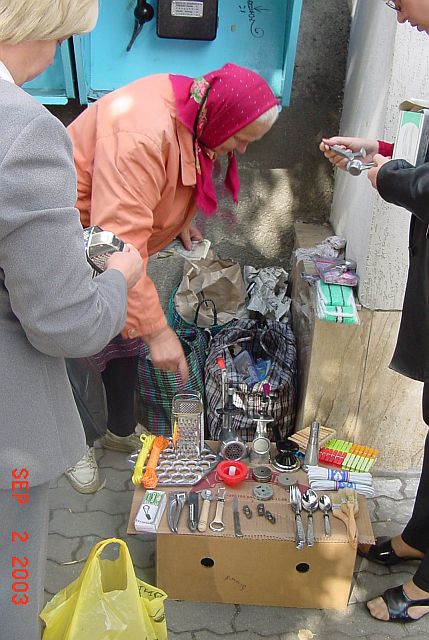
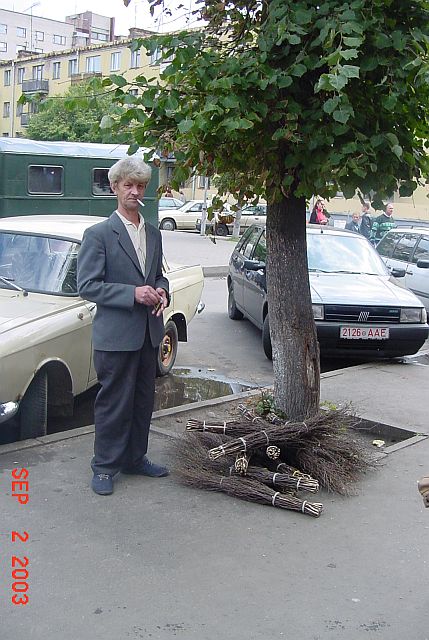
From the market, here’s a lady selling meat (one of maybe 50+ people doing so, all the same way) and the fruit and vegetable area. There were a lot of other interesting areas in the market – cheese, fish, sausages, eggs and many more had separate sections.
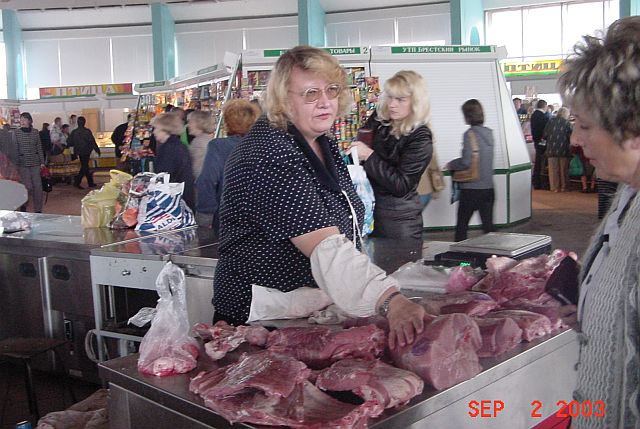
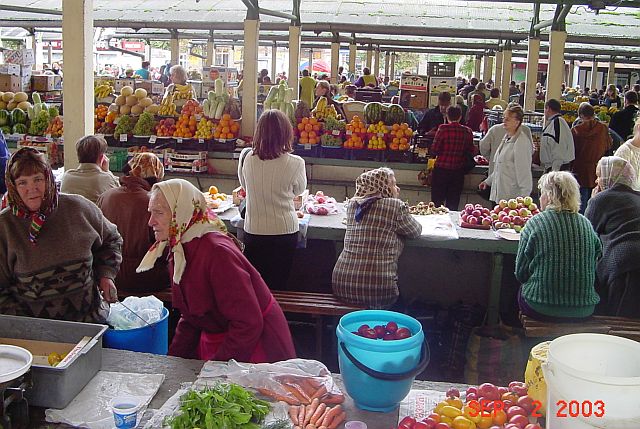
Note the small quantities of produce per vendor, and the vendor’s age. Everything is really inexpensive here, by US standards maybe 1/5th to 1/10th of our cost. You could retire here on $10,000 a year and live as one of the wealthiest people in Brest.
Finally, here’s shot of one of the couple of main streets in town. Wide but otherwise non-descript. This is a grey city. There is no “5th Avenue” shopping type street or stores, nor any significant western branded retailers, restaurant-types or products. The level of commercialism/retailing is a fraction of what it is in the west.
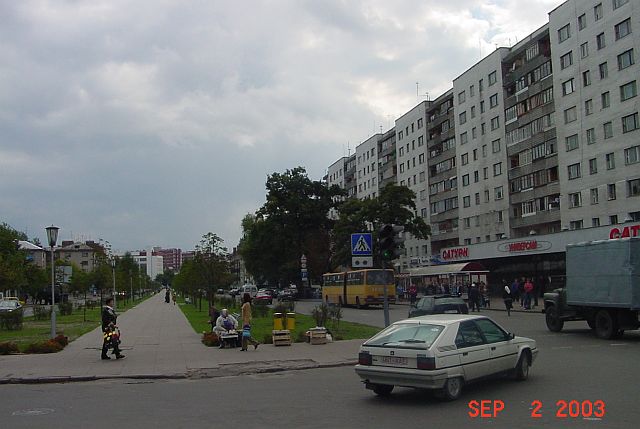
These things are getting too long…
9/2 12:18p
(Summary factoids and “quotes” above on Belarus and Brest were edited from the Lonely Planet Guide to Russia and Belarus, published in June 2003.)

 September 2, 2003
September 2, 2003 